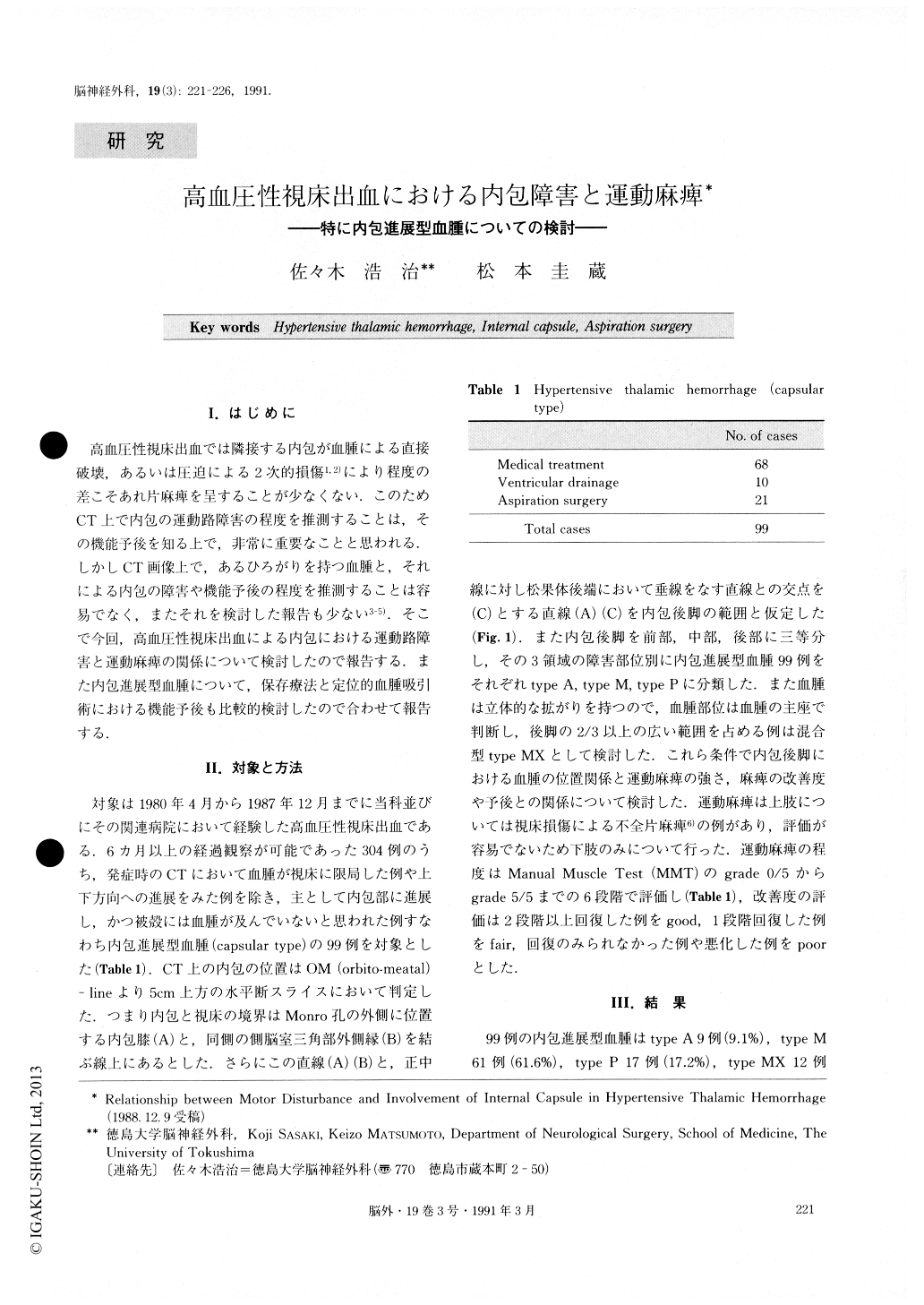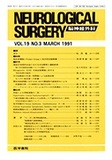Japanese
English
- 有料閲覧
- Abstract 文献概要
- 1ページ目 Look Inside
I.はじめに
高血圧性視床出血では隣接する内包が血腫による直接破壊,あるいは圧迫による2次的損傷1,2)により程度の差こそあれ片麻痺を呈することが少なくない.このためCT上で内包の運動路障害の程度を推測することは,その機能予後を知る上で,非常に重要なことと思われる.しかしCT画像上で,あるひろがりを持つ血腫と,それによる内包の障害や機能予後の程度を推測することは容易でなく,またそれを検討した報告も少ない3-5).そこで今回,高血圧性視床出血による内包における運動路障害と運動麻痺の関係について検討したので報告する.また内包進展型血腫について,保存療法と定位的血腫吸引術における機能予後も比較的検討したので合わせて報告する.
Abstract
We treated a consecutive series of 309 patients with hypertensive thalamic hemorrhage from April 1981 to December 1987. In 99 cases of involvement of the inter-nal capsule, the relationship between the extent of des-truction of the internal capsule and motor disturbance was clinically investigated and discussed. First, these 99 cases were classified into three groups on the basis of the location of the hematoma in the internal capsule on the CT image. All the cases were confined to the anter-ior, middle and posterior portions of the posterior limb of the internal casule.
The correlation between hematoma extension and the severity of motor weakness, its improvement and prognosis were discussed. The severity of motor weak-ness was found not to be related to hematoma exten-sion. On the other hand, the prognosis was frequently poor when the hematoma was located at the posterior portion within the posterior limb of the internal cap-sule. In hypertensive thalamic hemorrhage, there seemed to be a narrow and significant area within the posterior limb of the internal capsule which determined morbidity. And, as a matter of course, the nearer the hematoma was located to the border between the mid-dle and posterior portions, the worse the outcome was.
Cases treated by aspiration surgery were evaluated to investigate the utility of aspiration surgery for thala-mic hemorrhage. (Special attention was given to the ADL of those cases with severe motor weakness.)
When the hematoma was located at the posterior portion of the posterior limb of the internal capsule, the percentage of patients with good outcome was signifi-cantly higher in the aspirated group than in the medical group (p<0.05). This suggested that aspiration surgery can be usefully applied to acute patients with poor riskor severe motor weakness even if the hematoma is small, as long as the aspiration surgery is performed accurately and safely.

Copyright © 1991, Igaku-Shoin Ltd. All rights reserved.


